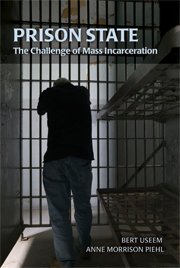Book contents
- Frontmatter
- Contents
- Acknowledgments
- 1 The Buildup to Mass Incarceration
- 2 Causes of the Prison Buildup
- 3 More Prison, Less Crime?
- 4 Prison Buildup and Disorder
- 5 The Buildup and Inmate Release
- 6 Impact of the Buildup on the Labor Market
- 7 Conclusion: Right-Sizing Prison
- Notes
- Index
- CAMBRIDGE STUDIES IN CRIMINOLOGY
3 - More Prison, Less Crime?
Published online by Cambridge University Press: 31 January 2011
- Frontmatter
- Contents
- Acknowledgments
- 1 The Buildup to Mass Incarceration
- 2 Causes of the Prison Buildup
- 3 More Prison, Less Crime?
- 4 Prison Buildup and Disorder
- 5 The Buildup and Inmate Release
- 6 Impact of the Buildup on the Labor Market
- 7 Conclusion: Right-Sizing Prison
- Notes
- Index
- CAMBRIDGE STUDIES IN CRIMINOLOGY
Summary
Cruelty turns out to be mainly the infliction of pain and suffering for a purpose. Our negative moral judgment has to do not only with pain but purpose.
Who is filling our jails and prisons? Most of the victims of the criminal justice system are minor offenders.
American jails and prisons are overflowing with convicts who would not have been thrown behind bars 30 years ago and who, moreover, would not be rotting there if the public were better informed about the realities of the country's penal policy.
Chapter 2 ended on a pragmatic note. Commentators on the buildup – however much confidence they express when they portray the causes of the buildup – are far less certain about what we should do tomorrow. The critics may see the prison buildup as insane, they may describe prisons as overflowing with minor offenders, and they may argue that the public's ignorance about “who” goes to prison is necessary to sustain the buildup. Yet, their own sanity, good reason, and informed opinions do not lead them to demand that we tear down the walls or even make them permeable enough to return to pre-buildup levels. They despise this “cruel historical experiment,” but they are not ready to reverse it, at least not all the way. How cruel could it be, in their view?
The proponents of the buildup see the quintupling of the prison population as bringing great benefits to society in the form of crime reduction.
- Type
- Chapter
- Information
- Prison StateThe Challenge of Mass Incarceration, pp. 51 - 80Publisher: Cambridge University PressPrint publication year: 2008

